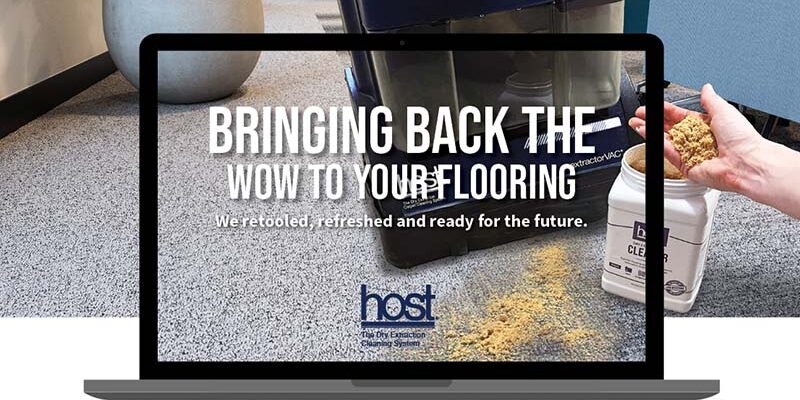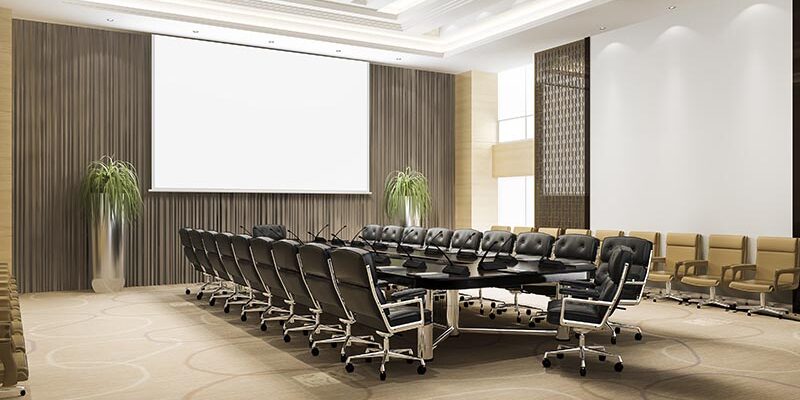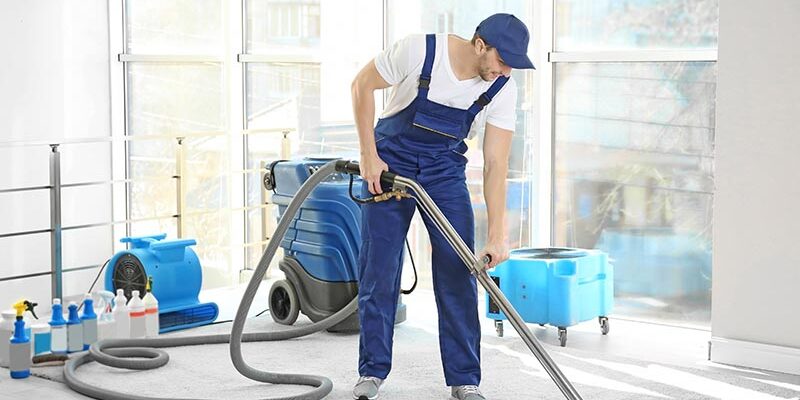Carpet ‘Cleaning’ Versus Carpet ‘Restoration’

By Jessika James
There is a big difference between carpet cleaning and carpet restoration, and here is the perfect example. I recently received a call from a good friend who owns a successful carpet cleaning company. He wanted some advice on a cleaning and maintenance project on which he was asked to give an estimate: An Asian food café with loop-pile nylon carpet that hadn’t been cleaned in about two and a half years. There were heavy food soils and spots, and the walkways were matted with grease.
The first concept to understand before approaching this project is it was not a carpet “cleaning” job, but rather a carpet “restoration” project.
For many of us, and in most cases, we are performing carpet cleaning projects. The carpet, whether residential or commercial, has been properly maintained and professionally cleaned on a timely basis. Cleaning projects are fairly simple using the professional-grade chemistry, cleaning tools and industrial equipment that most of us are presently using.
We may have some soil wicking occur in heavily soiled areas and need some spot or stain removal procedures, but the issues are usually rectified by a secondary cleaning or the use of a formulated products designed specifically for the situation.
When it comes to carpet restoration, a well-thought-out plan of action is required. The carpet installation, construction, fiber and soil load must be examined so we can properly prequalify the project and determine the correct methods and chemistry to bring the carpet back to a condition acceptable to the client. Then we must set-up a maintenance program to maintain the lifespan of the carpet.
With the information that my friend provided, I recommended the following procedures:
1. Prequalify: Speak to the client, and explain this is not a normal amount of soil and will require extensive carpet restoration services — most likely multiple cleanings to remove the soil. Also, note there may be fiber damage and stains that are not readily apparent due to the amount of soil embedded in the carpet.
2. Inspect the carpet: The installation method, the carpet construction and the fiber. Determine any issues such as faulty installation, damage, pulled loops, separating seams, staining, etc. Note any findings on your inspection sheet and prequalify.
3. Vacuum, vacuum, vacuum: Then vacuum again. This will help to prevent any soil wicking, although you should expect some, as it is part of the restoration plan. A pile lifter is recommended, but the use of a carpet rake to lift and separate fibers before vacuuming will help, too.
4. Primary cleaning: In the case of the first cleaning, I would not recommend pre-spotting. This primary cleaning is to loosen top and face fiber soils. Prespray the carpet with a professional grade prespray formulated with enzymes. Add a citrus solvent booster. Liberally prespray carpet, and allow dwell time as recommended on the manufacturer’s label.
5. Agitate: Use a mechanical rotary or cylindrical floor machine with a carpet brush to agitate prespray into the carpet, applying more prespray as necessary and focusing on traffic lanes and heavily soiled areas.
6. Primary extract: For the primary extraction, I recommend the hot water extraction method, preferably with a truckmount and a rotary tool. Use a professional-grade alkaline extraction detergent and lots of flushing. At this point, you will probably leave the carpet a little wetter than normal due to extensive flushing. Remember, this is just the first cleaning. With the amount of embedded soils, soil wicking is most likely going to occur — and really should be expected to occur. Groom with a carpet rake and allow the carpet to dry, or force it dry with air movers.
7. After the carpet is completely dry, re-inspect: At this point you may be able to determine, with your experience and knowledge, whether multiple cleanings — or, rather, how many — will be necessary. I once had a similar situation with an ice cream shop that needed four cleanings and the allowment of soil wicking to remove the microscopic soils embedded in the carpet backing components before the carpet was restored to an acceptable state for use.
8. Continue cleaning: After the primary restoration services are preformed, then you can continue to clean the carpet with your normal pre-spot, prespray, extract and groom cleaning methods. I recommend the use of a rotary floor machine with absorbent bonnets and the placement of air movers to help dry the carpet as quickly as possible.
After you have removed all of the loose and embedded food soils, grease and grime, it is time to perform your restoration spotting procedures.
This being an Asian food café, I would anticipate soy and sweet-and-sour sauce staining along with soda and coffee stains. Again, pre-qualify stain removal procedures, emphasizing that due to the amount of time that the stains have been left in the carpet, stain removal procedures may not be effective.
1. Inspect the stain and try to determine whether the stain has natural (organic) dyes, such as orange juice, soy sauce or coffee, or from a synthetic (inorganic) product that has man-made dyes, such as sweet-and-sour sauce and most sodas.
2. After making your best determination, choose an oxidizing product specifically formulated to remove natural dye pigments or a formulated reducing product designed to remove synthetic dyes. Follow the manufacturer’s directions for use.
After all carpet restoration services have been performed, re-inspect the carpet for any issues that you will want to discuss in your client post-qualification. Always take digital before-and-after pictures — often, the carpet restoration results are amazing.
Jessika James is the Senior Training Specialist for Kärcher North America and a sought-after IICRC-approved instructor. An industry veteran with over 30 years of experience as owner of a restoration and bio-remediation company, James is an IICRC Certified Master Textile Cleaner, Master Water Restorer and Master Fire & Smoke Restorer, among other certifications. She can be reached at [email protected].












